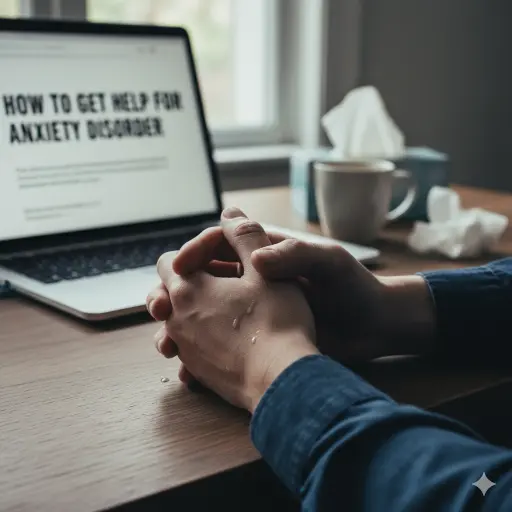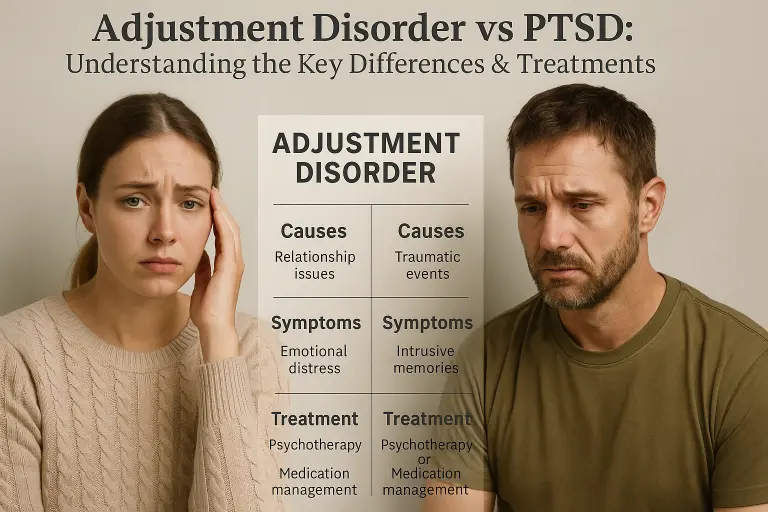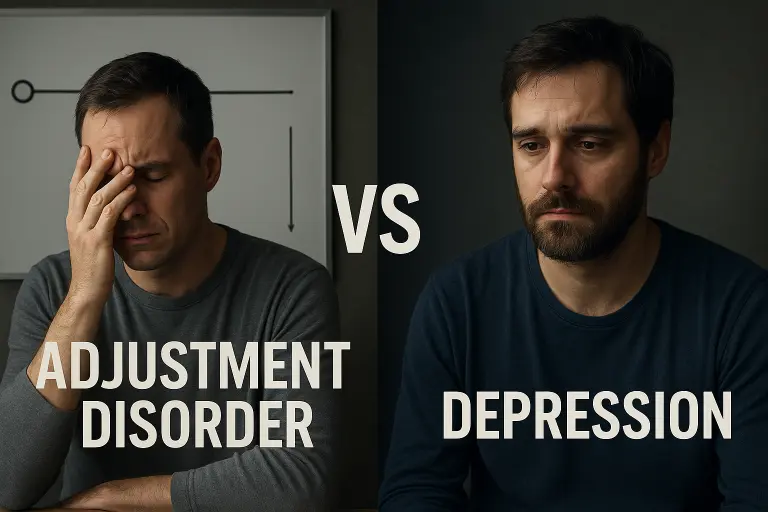Techniques to Address Black-and-White Thinking
Discover effective techniques for addressing black-and-white thinking and improve your relationships and mindset.


Understanding Black-and-White Thinking
Definition and Characteristics
Black-and-white thinking, often referred to as dichotomous or polarized thinking, is a cognitive distortion that limits individuals' ability to see the complexities, nuances, and shades in between extremes. This thought pattern forces people to categorize situations, people, and behaviors into two definitive categories: "good" or "bad." Such rigid thinking can lead to all-or-nothing perspectives, where an individual may perceive events as complete successes or total failures [1].
This cognitive distortion may inhibit individuals from recognizing various viewpoints and understanding the intricacies of interpersonal relationships. It creates an inability to appreciate the middle ground, increasing the likelihood of making sweeping generalizations and fostering intolerance of differing opinions.
Effects on Relationships
Dichotomous thinking can have significant negative effects on personal relationships. Individuals may draw incorrect conclusions about others based on rigid perceptions, leading to misunderstandings and conflicts. The lack of flexibility in thinking not only hampers effective communication but also limits opportunities for negotiation and compromise.
People who engage in black-and-white thinking may struggle in evaluating their relationships accurately, often believing their partners or friends are either entirely supportive or completely uncaring. This can impose undue strain, resulting in heightened interpersonal conflicts and reduced satisfaction within relationships.
Additionally, this cognitive distortion can affect mood and behavior, leading to increased anxiety and feelings of isolation. Individuals may feel compelled to choose between extreme positions, hindering their ability to engage in healthy, open discussions and leading to social isolation.
In light of these challenges, recognizing and addressing black-and-white thinking is critical for fostering healthier relationships and overall well-being. For strategies related to this topic, individuals may find valuable insights in resources such as cognitive distortions in personality disorders and addressing fear of abandonment in personality disorders.

Impacts Beyond Personal Relationships
Black-and-white thinking can significantly affect various aspects of life beyond personal relationships. This rigid thought pattern can manifest in educational contexts, career development, and dietary choices.
Educational Settings
In educational environments, black-and-white thinking can hinder a student’s ability to grasp concepts and limit learning opportunities. This mindset fosters a success or failure perspective, making it difficult for individuals to recognize incremental progress, which is crucial for mastery [1]. Students may struggle to engage in critical thinking and problem-solving, as they often view outcomes in extreme terms without considering the nuances of various topics.
Impact on EducationDescriptionLimited Critical ThinkingIndividuals may struggle to engage fully with complex subjects.Rigid LearningStudents may miss out on understanding gradual improvements.Fear of FailureThe desire to avoid failure may deter participation in challenging tasks.
For more information on cognitive distortions and their effects, visit our section on cognitive distortions in personality disorders.
Career Development
In the realm of career development, black-and-white thinking can lead to cognitive rigidity and missed opportunities. Such thinking often results in an inability to adapt to changing circumstances, which can hinder professional growth. This mindset may also lead to extremes in pessimism and optimism, ultimately impacting career prospects and the ability to collaborate. Individuals may misinterpret constructive feedback as criticism, further impeding their progress.
Impact on CareerDescriptionMissed OpportunitiesRigid thinking often causes individuals to disregard potential job prospects.Difficulty in TeamworkBlack-and-white thinking can create barriers to effective collaboration.Misinterpretation of FeedbackConstructive criticism may be perceived as an attack, limiting growth.
Dietary Habits
Black-and-white thinking can disrupt dietary habits by leading to rigid food rules and a negative relationship with food. Individuals may view eating as either entirely healthy or unhealthy, potentially resulting in strict dietary restrictions. This approach can contribute to issues such as emotional eating or the development of eating disorders [1]. A flexible approach to diet is essential for maintaining a balanced and healthy relationship with food.
Impact on Dietary HabitsDescriptionRigid Food RestrictionsIndividuals may set extreme dietary rules, leading to unhealthy habits.Relationship with FoodEmotional responses to eating can increase due to the success/failure mindset.Risk of Eating DisordersExtreme thinking can contribute to behaviors associated with eating disorders.
Exploring these impacts can enhance the understanding of how addressing black-and-white thinking is essential in various facets of life. For deeper insights on managing impulsivity associated with personality disorders, consider reading our article on managing impulsivity in personality disorders.
Recognizing Black-and-White Thinking
Understanding and identifying black-and-white thinking, also known as dichotomous thinking, is crucial for addressing its effects on individuals and their relationships.
Signs and Symptoms
Recognizing the signs and symptoms of black-and-white thinking can help individuals understand and address their thought patterns. Common indicators include:
Sign/SymptomDescriptionPerfect vs. FlawedViewing individuals as either perfect or completely flawed without recognizing any middle ground.Inability to See NuanceDifficulty acknowledging both positive and negative traits in people, leading to an extreme view of their character.Success or FailurePerceiving efforts as either total success or complete failure, limiting one's willingness to try new things.Fear of Making MistakesA pronounced fear of failure that holds individuals back from new experiences or challenges.Emotional DistressExperiencing stress and anxiety due to rigid thought patterns, which can lead to frustration and confusion.
These tendencies may oversimplify complex situations, leading to emotional distress and an inability to adapt to changing circumstances. For more information on how to cope with these emotional challenges, refer to our article about coping strategies for emotional outbursts.
Interpersonal Conflict Scenarios
Black-and-white thinking often manifests in interpersonal conflicts. Here are some common scenarios:
ScenarioDescriptionArgumentsA disagreement may escalate quickly when one party believes the other is entirely wrong or right, leaving no room for compromise.Evaluating RelationshipsIndividuals may end friendships or relationships abruptly, labeling others as "toxic" without considering their positive traits.Team DynamicsIn collaborative settings, team members may struggle to see the value of differing perspectives, leading to discord and ineffective teamwork.Parenting StylesParents may clash over child-rearing approaches, unable to appreciate the strengths in each other's methods.
These scenarios highlight the need to recognize and modify black-and-white thinking to foster healthier relationships. For insight into managing relationships impacted by personality disorders, check out our resource on strategies for loved ones of individuals with personality disorders.
Addressing black-and-white thinking is essential for improving personal well-being and nurturing meaningful connections with others.
Addressing Black-and-White Thinking
Addressing black-and-white thinking involves a combination of seeking professional help and employing practical coping strategies. These approaches can improve an individual's ability to navigate complex situations and relationships more effectively.
Seeking Professional Help
Professional support can be invaluable for individuals who struggle with black-and-white thinking. A mental health professional can help diagnose underlying conditions that may contribute to this cognitive style. They can provide tailored treatment options to assist in developing a more nuanced perspective [4].
Regular encounters with cognitive distortions can indicate the need for professional assistance. Many mental health conditions, including depression and anxiety disorders, might include such distortions as a symptom [5]. A therapist can guide individuals in recognizing these patterns and adapting their thinking.
Benefit of Seeking HelpDescriptionDiagnosisIdentifies underlying mental health conditions.Individualized TreatmentOffers personalized strategies to address black-and-white thinking.Emotional SupportProvides a safe space to explore thoughts and feelings.Skills DevelopmentTeaches techniques to foster nuanced thinking.
Coping Strategies and Techniques
In addition to professional help, individuals can benefit from various coping strategies to mitigate the effects of black-and-white thinking. These techniques aim to promote flexibility in thought patterns and improve emotional regulation.
For further insights on coping strategies for emotional regulation, individuals may refer to our article on coping strategies for emotional outbursts. By seeking both professional help and utilizing effective coping techniques, it is possible to transition towards a more balanced and flexible mindset.
Strategies for Overcoming Dichotomous Thinking
To effectively address black-and-white thinking, several strategies can be utilized. These include seeking other perspectives, adjusting language use, and challenging cognitive distortions.
Seeking Other Perspectives
One effective method for overcoming polarized thinking is actively seeking other viewpoints. By engaging with diverse perspectives, individuals can begin to recognize the complexity of situations and see beyond their binary lens. This practice encourages considering alternative explanations and acknowledging that most situations exist on a spectrum rather than as absolute opposites. Embracing varying opinions can foster a more balanced worldview and mitigate the tendency to label experiences as purely good or bad [4].
Adjusting Language Use
Another strategy involves modifying language habits. When communicating, individuals can benefit from using terms that reflect the nuances of situations rather than extreme labels. Instead of stating something is "perfect" or "terrible," using phrases like "mostly good" or "has some challenges" can introduce a "shades of gray" perspective. This approach can be reinforced through cognitive behavioral therapy (CBT), which has proven effective in helping individuals reshape their thought patterns and replace rigid thinking with more flexible, constructive approaches [6].
Language Use StrategiesDescriptionReplace AbsolutesUse descriptive words that indicate gradation (e.g., "often," "occasionally").Acknowledge ComplexityRecognize that situations may have both positive and negative aspects.
Challenging Cognitive Distortions
Cognitive distortions, particularly black-and-white thinking, can significantly impact individuals' ability to navigate life’s complexities. This thought pattern may lead individuals to view events as either successful or failures, neglecting the middle ground. To address this, individuals can undertake various steps:
These strategies may foster greater resilience and adaptability, ultimately leading to improved emotional well-being and healthier relationships. To further understand personal experiences with personality disorders and cognitive distortions, readers can refer to our articles on cognitive distortions in personality disorders and the impact of personality disorders on self-esteem.
References
[2]:
[3]:
[4]:
[5]:
[6]:
More Resources
A team ready to start your journey.
Get in touch — today.
We are a safe space – a haven for exceptional individuals to receive discreet, personalized, in-person treatment and care.
.avif)









